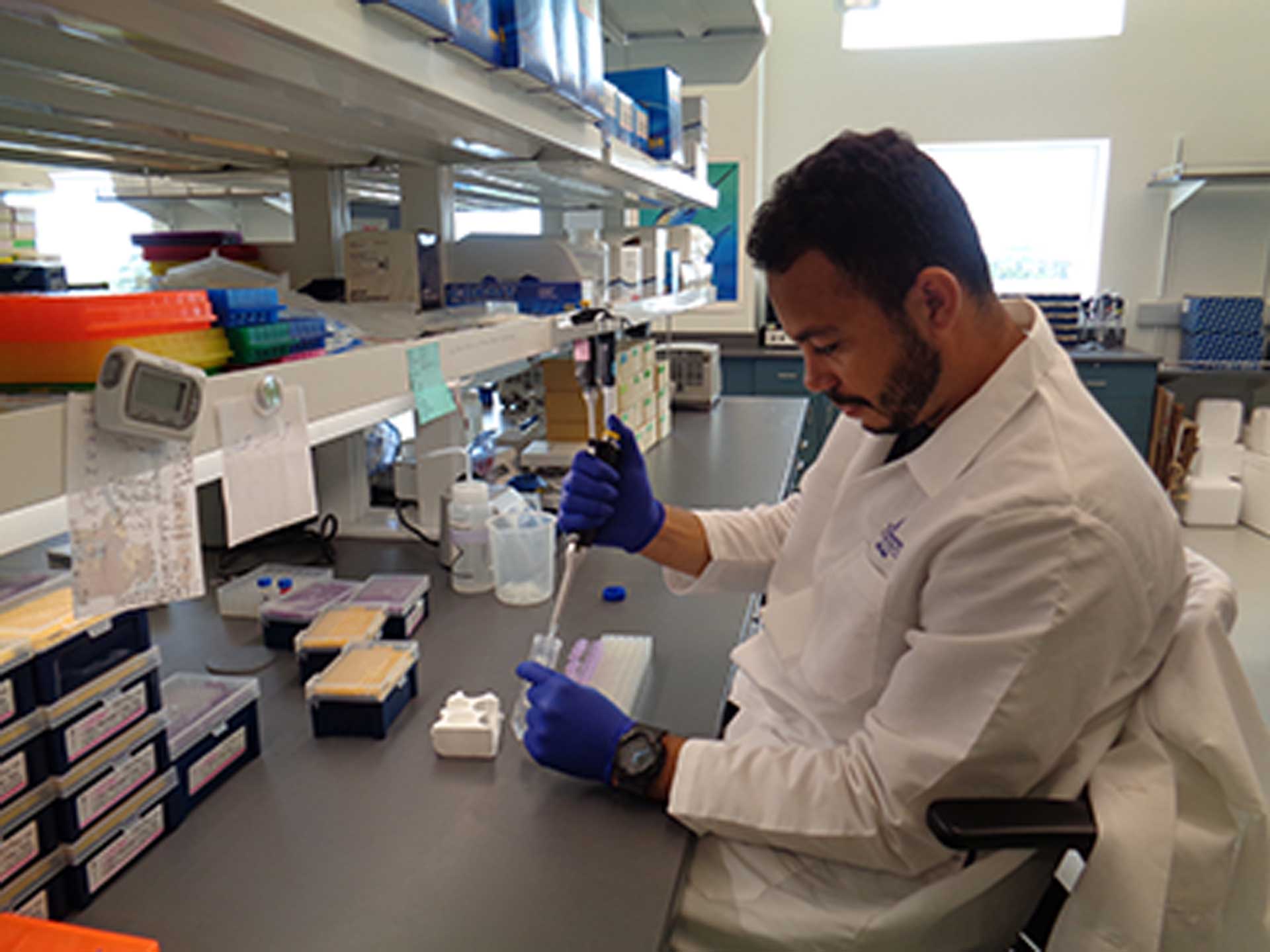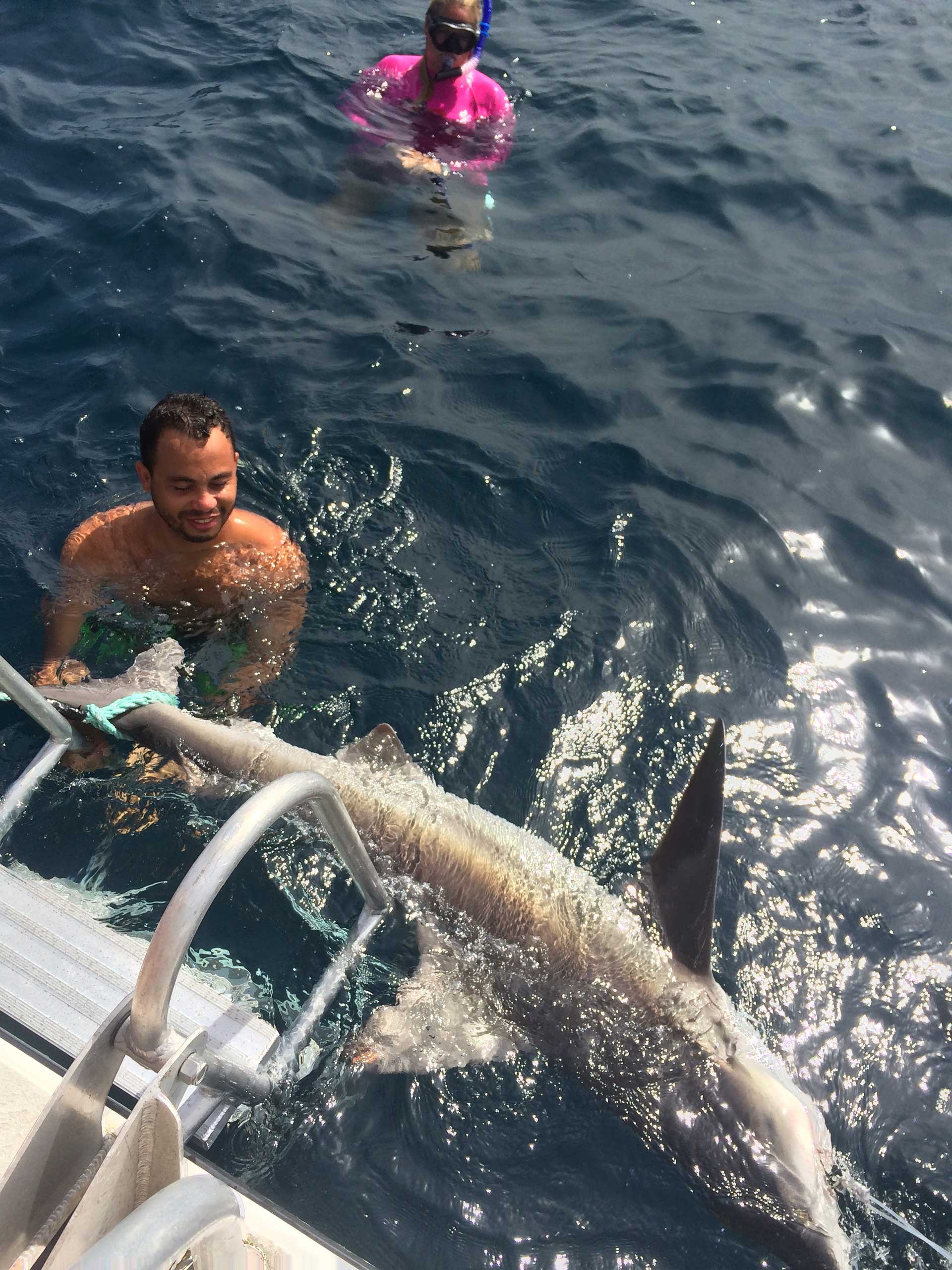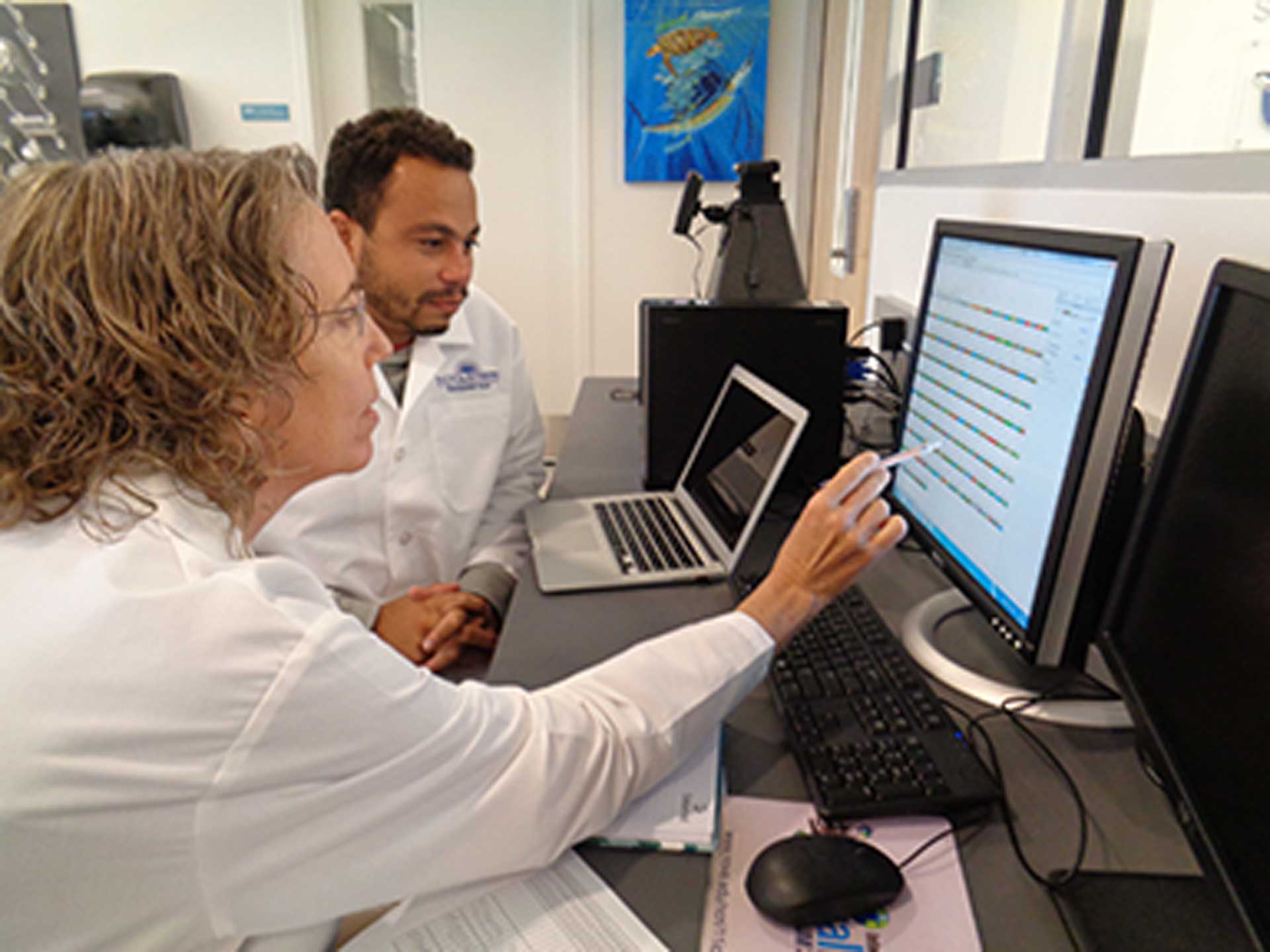Night sharks and silky sharks in the Western Atlantic
Having grown up close to the beach at São Paulo in Brazil, I have been interested in marine life since childhood. I surfed every day and each time I went out I would wonder, are there sharks around me? I felt a mixture of fascination and respect for them. In fact, sharks and rays always attracted my attention because of their beauty and grandeur. That’s why I began to focus on these fascinating animals during my undergraduate studies in marine biology at Santa Cecilia University. It was a great time of exploration and learning! Every day I was on the beach looking at what the local fishers had brought ashore. The fish they had caught were amazing and diverse, but unfortunately dead.
My professor suggested that I investigate the composition of Carcharhinus sharks caught in the south-western Atlantic for my Master’s degree. The species in this group are typically very difficult to identify from their morphological features, but by using the genetic tools available I was able to determine which species was which. Identifying sharks and others fishes via DNA led me into the world of genetics and conservation and since then I have used genetics as a means of answering ecological questions, mainly about sharks and rays.
I am doing my graduate research at the Laboratory of Biology and Taxonomy of Elasmobranchs at the São Paulo State University in collaboration with the Biotechnology Nucleo at the University of Mogi das Cruzes, São Paulo, and the Save Our Seas Shark Research Center (SOSSRC) at Nova Southeastern University, Florida. I’ve been working with the SOSSRC since 2011 on different shark and billfish projects and have gone to Florida three times as a visiting researcher. The SOSSRC offers great facilities and expertise that help me to conduct my research and I always enjoy working there.

Setting up DNA sequencing reactions in the Save Our Seas Shark Research Center Lab. Photo © Save Our Seas Foundation
For my PhD I am studying two pelagic shark species: night shark Carcharhinus signatus and silky shark C. falciformis. The former occurs across the entire Atlantic Ocean and the latter is found worldwide, and both are vulnerable to overfishing, mainly because they are taken as by-catch by industrial fisheries. As a result, both species are on the IUCN Red List of Threatened SpeciesTM – the night shark listed as Vulnerable and the silky shark as Near Threatened.
My research concerns the genetic dynamics of these two shark species and includes aspects such as genetic diversity, population structure and demographic history in the Western Atlantic Ocean. Many marine fishes from both coastal and oceanic environments have suffered significant population declines in recent years, mainly due to human factors such as fisheries pressure, pollution and habitat loss or damage. By the time I have completed my research I hope to be able to assist future conservation plans and the proper management of these heavily fished species.


